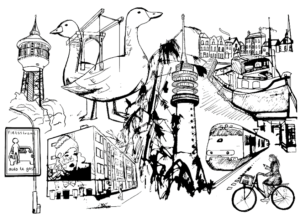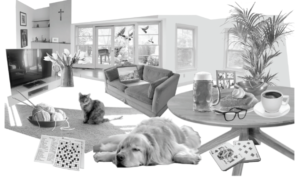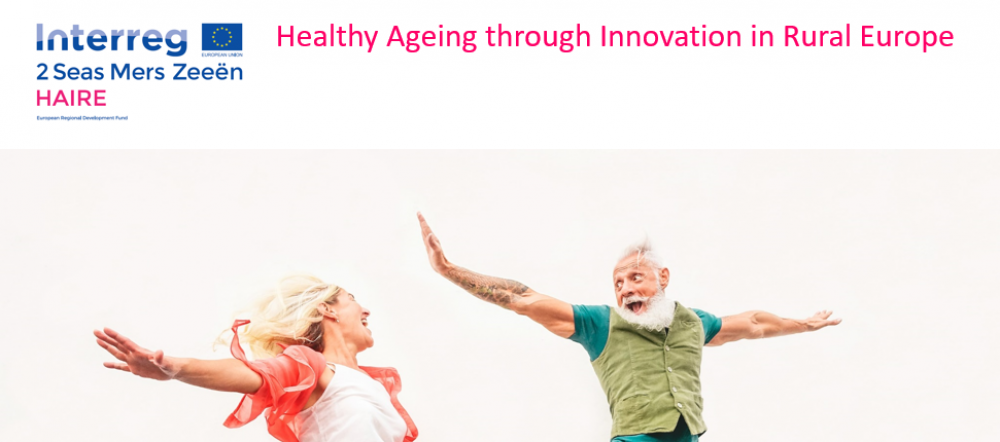Shuks Esmene, the postdoctoral research fellow on HAIRE, reflects on the Guided Conversation, a key part of HAIRE’s toolkit, in a two part blog.
In this blog, we document how HAIRE’s Guided Conversation (GC) shaped the project’s insights into the wellbeing of the older adults in its pilot sites. We reflect on the attributes of the GC that enabled the project to explore the deep, changeable and sometimes unique aspects of wellbeing.
HAIRE’s Guided Conversation (GC) was co-designed by the project’s partners to support older adults in discussing their needs, knowledges and skills, and aspirations. In-depth, one-to-one dialogues in community settings helped HAIRE to understand how place-based, person-centred and structural influences combine to shape wellbeing at an individual level.
Broadly…
- …Place-based influences refer to the places and spaces that individuals use for socialising and during their daily routines. Places and spaces that have shaped a person’s life experiences, past and present, are important too.
- …Person-centred influences encompass the life experiences that shape a person’s self-esteem, confidence and how they relate to others. Such experiences guide what a person finds meaningful and values, which can change over time.
- …Structural influences are defined by the support that is available and accessible for a person – particularly in relation to how social and health care services are organised at a local and national level.
What is HAIRE’s GC and how did it help?
HAIRE’s GC combined creative conversational prompts and broad wellbeing-related topics that were of interest to the project’s partners. In brief, partners were interested in how a person’s local neighbourhood and living spaces influence their wellbeing. The creative prompts that we co-designed reflected these interests. Essentially, the creative prompts encouraged individuals to: i) think about their wellbeing in relation to their local area and ii) think about how their living spaces influence their wellbeing.
Example of a creative conversational prompt that relates to a local area (HAIRE’s pilot site in Goes, the Netherlands):

Example of a creative conversation prompt that relates to a living space (co-designed for HAIRE’s pilot sites in Department du Nord, France):

The collages shown above were co-designed via an iterative process. Input and feedback, collected during multiple points of the design process, was provided by the project partners and the groups, organisations and individuals that they worked with in HAIRE’s pilot sites. The collages do not intend to be representative of anyone or any place. Their main purpose is to help conversation.
Ultimately, HAIRE wanted to understand wellbeing as told by the project’s participants. To do so, broad questions were posed to the older adults that resided in the project’s pilot sites. For example: “how do you feel about living in your neighbourhood?” Responses to these types of questions can be difficult to articulate – particularly if individuals have not had the time to reflect on such matters. The creative prompts provided participants with a starting point for their thoughts. The streets and spaces in the collage can remind someone of a specific experience that they had in their neighbourhood, cultural symbols may spark thoughts about belonging (positive and negative), depictions of wildlife can induce conversations about someone’s fondness for nature, or a difficult time that they had with a wild goose. The possibilities are endless!
Importantly, the materials that are co-designed for a GC need to work in combination with active listening. Active listening’s six key skills are summarised below:

In terms of active listening, a person conducting a GC can focus on:
i) Taking an active interest in what a participant is saying (1. Pay Attention);
ii) Refraining from imposing their beliefs on someone’s opinions (2. Withold Judgement);
iii) Staying attentive to what can be asked next to understand a person’s experiences and opinions in relation to what a GC aims to explore (3. Reflect);
iv) Taking notes (if relevant) that are structured to summarise the key points of what is being said – usually, capturing positives, key issues, anything that can be done to address such issues (including actions that the individual can do) and any support that can be provided to address someone’s problems works well (4. Summarise);
v) Asking follow-up questions to understand points of conversation that seem unclear (e.g. “so, you mentioned that your relationship with the local area was ‘up and down’, what do you mean by that?”). This point is important for understanding certain issues and what can be done to support a person to navigate those issues (5. Clarity);
vi) Explaining to participants the key points that were captured from the conversation. This can be done via sharing any notes that were taken and/or explaining a summary of the conversation to the participant at a later date. Here, an opportunity is provided for a participant to confirm and reflect on what is important for them (6. Share).
The creative prompts in HAIRE’s GC and active listening helped to guide conversations with older adults towards the topics that were of specific interest to the project’s partners. In all, there were 20 topics (examples include facilities and amenities, social and cultural opportunities, mobility, identity and belonging, and inclusion). Not all topics had to be covered, but they provided opportunities to build on what a participant was saying about their wellbeing. A bit like a menu for conversation that can be picked from, based on what is important to a participant. Although, the rich menu of 20 conversational options did come with its challenges. Conversations could last up to 4 hours and remembering all of the options while a conversation was ongoing proved to be tricky.
In principle, the GC is all about allowing for deep and far-reaching conversations to take place. However, in many circumstances, other time constraints mean that conversations need to, at least, have a rough estimated duration. Such circumstances can benefit from limiting the number of specific topics in a GC and/or ensuring that a conversation is spread across multiple interactions, at different times, with a participant. In our next blog, HAIRE’s learning will be drawn on to provide an overview of key considerations for designing a GC.
